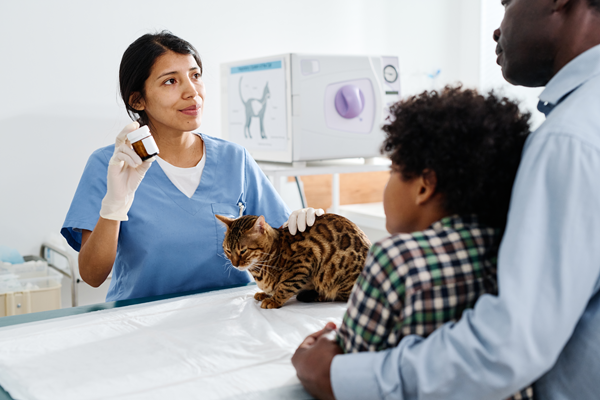
Our pets rely on us for love, care, and protection, and part of that responsibility includes understanding the health risks they face. One such emerging threat is antibiotic resistance, a growing concern that affects not only humans but also our beloved pets. In this blog, we’ll explore what antibiotic resistance is, why it’s a problem, and how you can help safeguard your pets’ health.
What is antibiotic resistance?
Antibiotic resistance occurs when bacteria evolve and develop the ability to defeat the drugs designed to kill them. Bacteria pass these resistant genes to their offspring, and they can also share them with other bacteria nearby. Infections caused by resistant bacteria become harder to treat, leading to prolonged illnesses, more frequent veterinary visits, and an increased risk of severe complications, including death. In fact, antibiotic-resistant infections have become a leading cause of death in people, on a global scale.
Why is antibiotic resistance a problem for pets?
Limited Treatment Options: When bacteria become resistant to commonly used antibiotics, veterinarians have fewer options to effectively treat infections. This can lead to longer recovery times and higher medical costs.
Increased Risk of Spread: Resistant infections can spread from pets to other animals and even to humans, posing a public health risk. This is particularly concerning for households with vulnerable individuals, such as young children, the elderly, or immunocompromised family members.
Complicated Medical Procedures: Antibiotic resistance can complicate routine procedures and surgeries. Infections that arise post-surgery or during treatment for chronic conditions can become more difficult to manage.
What causes of antibiotic resistance in pets?
Overuse of Antibiotics: One of the primary drivers of antibiotic resistance is the overuse and misuse of these medications. This includes:
- Inappropriate Prescriptions: Antibiotics prescribed for viral or fungal infections, which they cannot treat, or prescribed when not needed at all.
- Incomplete Courses: Not finishing the full course of antibiotics, allowing some bacteria to survive and develop resistance.
Improper Dosing: Incorrect dosing, either too low or too high, can contribute to resistance.
- Underdosing allows bacteria to survive and adapt.
- Overdosing can cause unnecessary side effects and promote resistance.
Use of Antibiotics in Agriculture: Antibiotics used in livestock can contribute to the development of resistant bacteria. These bacteria can be transmitted to pets through contaminated food or contact with farm environments.
How can I help prevent antibiotic resistance?
- Use Antibiotics Responsibly: Always follow your veterinarian’s instructions when your pet is prescribed antibiotics. Ensure your pet takes the full course of medication, even if they seem to be feeling better.
- Regular Veterinary Check-Ups: Regular check-ups can help catch infections early and reduce the need for antibiotics. Vaccinations and preventive care can also lower the risk of infections.
- Good Hygiene Practices: Maintain good hygiene for your pets. Regular grooming and cleaning of their living spaces can reduce the risk of infections. Wash your hands after handling your pets, especially if they are sick.
- Appropriate Use of Antibiotics in Agriculture: If you own livestock or have contact with farm animals, use antibiotics responsibly and follow guidelines to minimize the risk of resistance.
- Educate Yourself and Others: Stay informed about antibiotic resistance and spread awareness among other pet owners. Understanding the risks and responsible practices can make a significant impact on combating resistance.
What should I do if my pet needs antibiotics?
- Consult Your Vet: Always rely on a veterinarian’s expertise to diagnose and prescribe antibiotics.
- Follow Directions: Administer the medication exactly as prescribed. Do not stop early, even if your pet appears to have recovered.
- Monitor Your Pet: Keep an eye on your pet for any side effects or lack of improvement and report these to your vet promptly.
Antibiotic resistance is a serious issue that requires our attention and action. By using antibiotics responsibly and following best practices, we can help protect our pets and ourselves from the dangers of resistant infections. Together, we can ensure that antibiotics remain effective tools in fighting bacterial infections and maintaining the health and well-being of our pets and ourselves.
